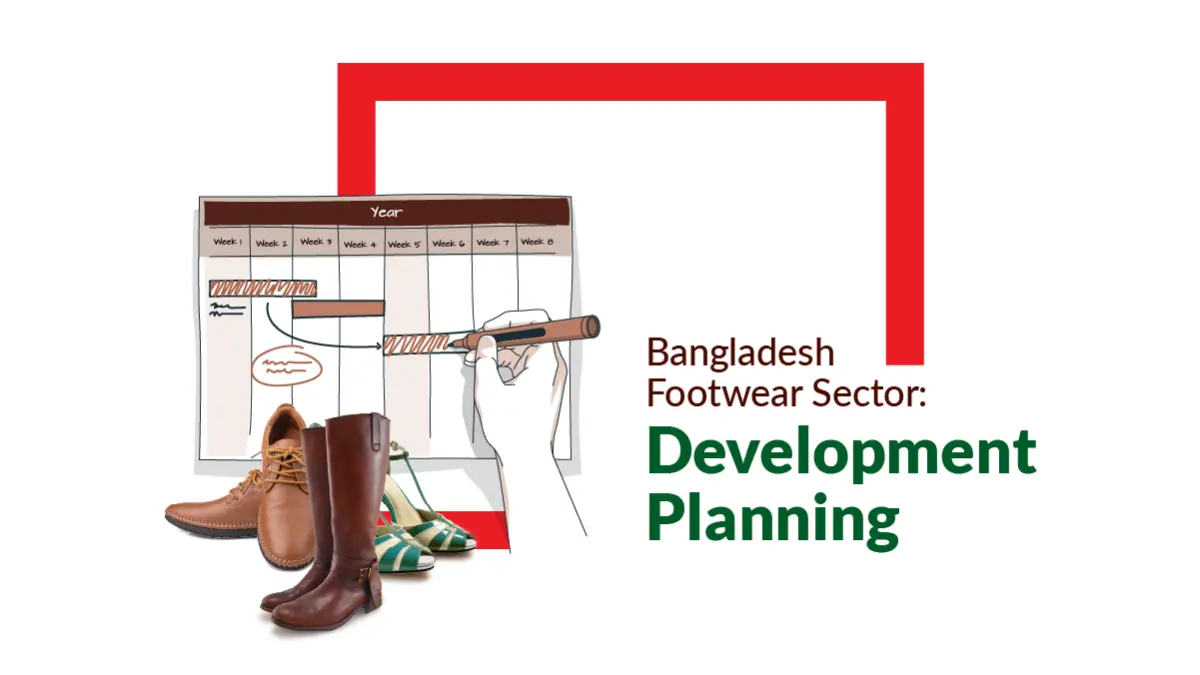Once an industry completely dependent on crafting traditional cottage based footwear is now powerhouse in the Bangladeshi economy. The Industry we are talking about is Bangladesh’s leather and footwear industry. As of Today Bangladeshi Leather and Leather Goods Industry has positioned itself, firmly, as the second highest export earning sector of the country, right after the ready-made garments industry, paving its path to become one of the top ten leather exporting countries by 2025.
The Industry at A Glance
One of the key feature why Bangladeshi leather good, are preferred globally is the Raw Hide, notably, the cow hides known for its distinctive texture and finish. The Industry now employs more than 850,000 thousand where 60% of them are women, providing significant contribution to the employment of the country’s population. As mentioned, the country’s leather goods industry started with merely 30 tanneries, but that is not the scenario anymore. Currently Bangladesh has more than 200 tanneries, 3500+ MSME’s and several large scale manufacturers active in the industry already catering to both domestic and international market.
More than 1 billion dollars has been invested in the sector, amongst which, 700 million dollars is domestic and 300 million dollars is international investment with an export goal of 10-12 billion dollars by 2030. The trajectory so far looks extremely promising as in the FY 2022-23 Bangladesh’s leather goods export exceeded 1.2 billion dollars amongst which 396.37 million dollars were generated from leather products, 123.44 million dollars were generated from only leather and 703.81 million dollars were generated from leather footwear products. Considering the given scenario, the future of particularly footwear segment looks bright. Bangladeshi Leather Footwear products are now being exported in destinations like Germany, Italy, France, The United States of America and the United Kingdom.
As the industry has proved its worth and continues to grow, to achieve the goal to expand its presence in global market, the industry’s development planning was integral. With a hope to strengthen Bangladesh’s position in the global footwear market The Government of Bangladesh is implementing positive major development plans.
Priorities in Development Planning
Bangladesh has identified footwear industry as strategic growth driver and several key development plan is underway to elevate the industry.
- Investment in Modern Manufacturing Facilities: the manufacturers which are currently in operation are transitioning from traditional method of production to state of the art manufacturing facilities with upgraded machineries and automation. This shift will result in improving product quality, consistency and scalability giving Bangladeshi manufacturers an opportunity to compete in high end international markets.
- Expansion of the Leather Industrial Park in Savar: An element which is critical in ensuring this industry’s development is the Savar Leather Industrial Park. The Industrial park, primarily focused on tanning also supports integrated leather and footwear production. The Government is working relentlessly to ensure the full operation of the Central Effluent Treatment Plant (CETP), a plant which is essential in attracting environmentally conscious international buyers.
- Skills Development and Workforce Training: As mentioned earlier the leather and footwear manufacturing sector facilitates jobs for over 850,000 people, making this sector a major employment generator. The government of Bangladesh has recognized the shortages of skilled labor in major areas, as a result the government is planning technical training programs and industry-academia collaboration to boost workforce capabilities in areas such as design, cutting, stitching and finishing.
- Policy and Fiscal Incentives: as part of the broader industrial strategy, the government has classified the leather sector including footwear sector as a thrust sector. This includes
a. Tax holidays
b. Duty free import of raw materials and machinery
c. Bonded warehouse facilities
d. Export finance support
Initiatives like these are designed to attract foreign direct investments (FDI) and encourage entrepreneurs to scale up. - Emphasis on Sustainability and Compliance: To maintain competitiveness, development plans focus on eco-friendly practices and global compliance standards. As international buyers are increasingly demanding ethical sourcing and environmentally sustainable products, LEEDs Certification, ISO Standards and traceability has become a critical priority.
With a rising global demand for leather and non-leather footwear, Bangladesh is positioning itself as a competitive sourcing destination. Strategic development planning focused on modernization, environmental compliance, skill development and export incentives are transforming the sector into a growth engine.

